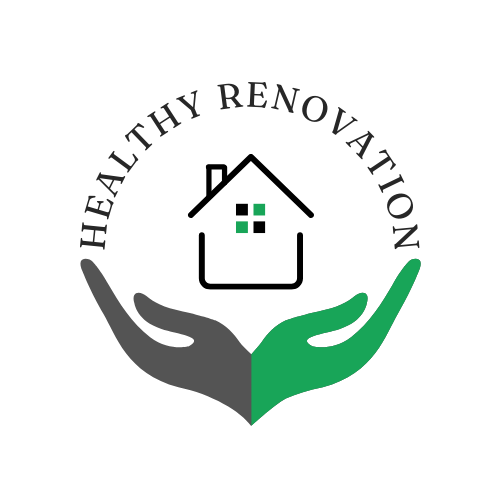How-To Guide: Smart Home Technology for Healthy Home Monitoring
Creating a healthier living environment is now easier than ever with Smart Home Technology for Healthy Home Monitoring. From monitoring air quality to reducing exposure to harmful chemicals, smart devices empower homeowners to create spaces that promote well-being. This guide provides a step-by-step roadmap to integrate smart home technology into your life, with a special focus on air quality, dust particulates, and minimizing exposure to chemicals.
Introduction: Why Healthy Home Monitoring Matters
The air we breathe and the spaces we inhabit profoundly impact our health. With rising concerns about indoor pollutants, allergens, and chemicals, incorporating Smart Home Technology for Healthy Home Monitoring has become essential. Smart devices offer real-time insights, actionable data, and automated solutions to transform your home into a sanctuary for health.
Whether you’re just starting or already have some experience with smart home gadgets, this guide will walk you through everything you need to know about setting up a system to track air quality, minimize dust, and reduce exposure to harmful substances.
Step-by-Step Guide to Smart Home Technology for Healthy Home Monitoring
Step 1: Understand Your Home’s Needs
Overview: Before investing in smart devices, assess your home environment. Identify areas prone to dust, moisture, or chemical exposure.
Instructions:
Walk through each room to pinpoint common health hazards (e.g., dusty corners, poor ventilation, cleaning product storage).
List your priorities, such as reducing allergens, improving ventilation, or tracking chemical levels.
Practical Tip: Use a basic air quality monitor or free smartphone apps to get initial readings of pollutants.
Engaging Question: What is your main concern when it comes to your home’s health? Dust, chemicals, or air quality?
Step 2: Choose the Right Devices
Overview: Selecting the right smart gadgets tailored to your needs is crucial for effective monitoring.
Instructions:
Air Quality Monitors: Opt for devices that track PM2.5, VOCs (volatile organic compounds), and CO2 levels. Popular options include the Awair Element and Dyson Pure Cool.
Smart Air Purifiers: Choose models that integrate with air quality monitors for automated adjustments.
Dust Sensors: Install sensors in high-traffic areas to track particulates and reduce cleaning guesswork.
Chemical Exposure Monitors: Devices like uHoo provide insights into chemical levels and offer recommendations for ventilation.
Practical Tip: Look for products compatible with your existing smart home ecosystem (e.g., Alexa, Google Home, Apple HomeKit).
Engaging Exercise: Research one air quality monitor and check its compatibility with your smart devices.
Step 3: Create an Efficient Setup
Overview: Positioning and connecting your devices strategically ensures optimal performance.
Instructions:
Place air quality monitors near potential sources of pollution (e.g., kitchens, garages, or living rooms).
Set up dust sensors at floor level in areas with high foot traffic.
Position chemical monitors in bathrooms or storage areas for cleaning supplies.
Connect all devices to a centralized hub for seamless operation.
Practical Tip: Regularly calibrate your devices to ensure accurate readings.
Engaging Question: Where in your home would you prioritize setting up air quality monitors and why?
Step 4: Automate for Maximum Efficiency
Overview: Automation takes the hassle out of monitoring and maintaining a healthy home.
Instructions:
Use smart home hubs to create automated routines. For instance, program your air purifier to turn on when PM2.5 levels rise above a set threshold.
Set notifications to alert you when chemical or dust levels spike.
Integrate with HVAC systems for real-time air circulation adjustments.
Practical Tip: Test your automation setups to ensure smooth operation and minimal false alarms.
Engaging Exercise: Create a basic automation routine using a smart assistant like Alexa or Google Home.
Step 5: Regularly Monitor and Maintain Your Setup
Overview: Maintaining your devices ensures longevity and accurate monitoring.
Instructions:
Replace air purifier filters as recommended by the manufacturer.
Clean dust sensors weekly to prevent buildup from skewing readings.
Periodically review your device data to identify trends or recurring issues.
Practical Tip: Schedule reminders for maintenance tasks using your smart assistant.
Engaging Question: How often do you currently clean or replace filters in your home appliances?
Common Errors and Misconceptions
Misplacing Devices: Positioning air quality monitors or dust sensors in the wrong spots (e.g., near windows or vents) can lead to inaccurate readings.
Solution: Always place devices where they can detect average air conditions, away from direct airflow.Overlooking Maintenance: Ignoring filter replacements or sensor cleaning reduces device effectiveness.
Solution: Set maintenance alerts and follow the manufacturer’s guidelines.Relying Solely on Technology: Technology is a tool, not a cure-all.
Solution: Complement smart devices with good habits like regular cleaning and ventilation.
Wrap-Up: Take Control of Your Healthy Home
By integrating Smart Home Technology for Healthy Home Monitoring, you’re taking a proactive step toward a healthier lifestyle. From air quality monitors to dust sensors and chemical trackers, these tools provide actionable insights that transform your home environment.
Start small, prioritize your biggest concerns, and scale up as needed. With smart automation, ongoing maintenance, and the right tools, you can create a living space that truly supports your well-being.
